Eroticism has accompanied art since its inception. In photography, very shortly after the arrival of our beloved profession, the black market of pornographic distribution created a wave of erotic images in England.
In an article by Robert K Bass for Fstoppers, the journalist talks about the long history of sexual representation in the arts. In England there are pieces with genital representations of more than 12,000 years old. These representations were accompanying the evolutions of style and technique, showing the relationship of sexuality with society, different cultures and the vision of sex through how morality changes over the years. Eroticism has accompanied our history since its inception and will continue to do so through the different arts.

Study of Nude in front of Venus de Milo, by Bruno Braquehais
With the arrival of the daguerreotype in Europe, several photographers such as Bruno Braquehais and Féix-Jaques Moulin created photographic studios where they took photographs of an erotic nature. Many of the representations had a painting-inspired style, depicting poses from classical paintings brought into the modern studio.. Even some capture techniques were experimented with, as can be seen from the stereoscopic portrait made by Braquehais below.

Stereoscopic nude plate. By Bruno Braquehais ca. 1858, Paris
In Bass’s article, The author mentions that the photograph quickly became one of the popular Holywell Street pornographic traffic markets. Place where the pornographic press had been around for a long time. In this place, the hand-painted daguerreotypes and eventually the calotypes were items of luxury and great interest to the audience.

Naked woman, by Félix-Jaques Moulín, Colored Daguerreotype.
Not only did the demand for these works grow, but quickly transformed the market to meet the needs of works with cheap copies or productions and works created by request for private collections. However, government morals, in an attempt to control and prevent the corruption of the minds of young people, created laws in the mid-1800s to seek, retain and burn erotic material illegally distributed on these streets. Which landed dealers, photographers, and some printers’ agents in jail, until their dying days.

Naked woman, anonymous author
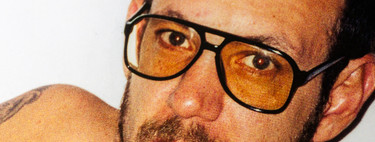
Although the purpose of these works was nothing more than the pleasure of those who paid to see them, the photographers showed a search for the scene that would resemble that of the painting. There are even galleries that display these pieces in their pavilions, although they may be considered somewhat vulgar to some.
___
Article images via Wikimedia
- Photographers
- History of photography
Eroticism has accompanied art since its inception. In photography, very shortly after the arrival of our beloved profession, the black market of pornographic distribution created a wave of erotic images in England.
In an article by Robert K Bass for Fstoppers, the journalist talks about the long history of sexual representation in the arts. In England there are pieces with genital representations of more than 12,000 years old. These representations were accompanying the evolutions of style and technique, showing the relationship of sexuality with society, different cultures and the vision of sex through how morality changes over the years. Eroticism has accompanied our history since its inception and will continue to do so through the different arts.

Study of Nude in front of Venus de Milo, by Bruno Braquehais
With the arrival of the daguerreotype in Europe, several photographers such as Bruno Braquehais and Féix-Jaques Moulin created photographic studios where they took photographs of an erotic nature. Many of the representations had a painting-inspired style, depicting poses from classical paintings brought into the modern studio.. Even some capture techniques were experimented with, as can be seen from the stereoscopic portrait made by Braquehais below.

Stereoscopic nude plate. By Bruno Braquehais ca. 1858, Paris
In Bass’s article, The author mentions that the photograph quickly became one of the popular Holywell Street pornographic traffic markets. Place where the pornographic press had been around for a long time. In this place, the hand-painted daguerreotypes and eventually the calotypes were items of luxury and great interest to the audience.

Naked woman, by Félix-Jaques Moulín, Colored Daguerreotype.
Not only did the demand for these works grow, but quickly transformed the market to meet the needs of works with cheap copies or productions and works created by request for private collections. However, government morals, in an attempt to control and prevent the corruption of the minds of young people, created laws in the mid-1800s to seek, retain and burn erotic material illegally distributed on these streets. Which landed dealers, photographers, and some printers’ agents in jail, until their dying days.

Naked woman, anonymous author

Although the purpose of these works was nothing more than the pleasure of those who paid to see them, the photographers showed a search for the scene that would resemble that of the painting. There are even galleries that display these pieces in their pavilions, although they may be considered somewhat vulgar to some.
___
Article images via Wikimedia
- Photographers
- History of photography
Eroticism has accompanied art since its inception. In photography, very shortly after the arrival of our beloved profession, the black market of pornographic distribution created a wave of erotic images in England.
In an article by Robert K Bass for Fstoppers, the journalist talks about the long history of sexual representation in the arts. In England there are pieces with genital representations of more than 12,000 years old. These representations were accompanying the evolutions of style and technique, showing the relationship of sexuality with society, different cultures and the vision of sex through how morality changes over the years. Eroticism has accompanied our history since its inception and will continue to do so through the different arts.

Study of Nude in front of Venus de Milo, by Bruno Braquehais
With the arrival of the daguerreotype in Europe, several photographers such as Bruno Braquehais and Féix-Jaques Moulin created photographic studios where they took photographs of an erotic nature. Many of the representations had a painting-inspired style, depicting poses from classical paintings brought into the modern studio.. Even some capture techniques were experimented with, as can be seen from the stereoscopic portrait made by Braquehais below.

Stereoscopic nude plate. By Bruno Braquehais ca. 1858, Paris
In Bass’s article, The author mentions that the photograph quickly became one of the popular Holywell Street pornographic traffic markets. Place where the pornographic press had been around for a long time. In this place, the hand-painted daguerreotypes and eventually the calotypes were items of luxury and great interest to the audience.

Naked woman, by Félix-Jaques Moulín, Colored Daguerreotype.
Not only did the demand for these works grow, but quickly transformed the market to meet the needs of works with cheap copies or productions and works created by request for private collections. However, government morals, in an attempt to control and prevent the corruption of the minds of young people, created laws in the mid-1800s to seek, retain and burn erotic material illegally distributed on these streets. Which landed dealers, photographers, and some printers’ agents in jail, until their dying days.

Naked woman, anonymous author

Although the purpose of these works was nothing more than the pleasure of those who paid to see them, the photographers showed a search for the scene that would resemble that of the painting. There are even galleries that display these pieces in their pavilions, although they may be considered somewhat vulgar to some.
___
Article images via Wikimedia
- Photographers
- History of photography
Eroticism has accompanied art since its inception. In photography, very shortly after the arrival of our beloved profession, the black market of pornographic distribution created a wave of erotic images in England.
In an article by Robert K Bass for Fstoppers, the journalist talks about the long history of sexual representation in the arts. In England there are pieces with genital representations of more than 12,000 years old. These representations were accompanying the evolutions of style and technique, showing the relationship of sexuality with society, different cultures and the vision of sex through how morality changes over the years. Eroticism has accompanied our history since its inception and will continue to do so through the different arts.

Study of Nude in front of Venus de Milo, by Bruno Braquehais
With the arrival of the daguerreotype in Europe, several photographers such as Bruno Braquehais and Féix-Jaques Moulin created photographic studios where they took photographs of an erotic nature. Many of the representations had a painting-inspired style, depicting poses from classical paintings brought into the modern studio.. Even some capture techniques were experimented with, as can be seen from the stereoscopic portrait made by Braquehais below.

Stereoscopic nude plate. By Bruno Braquehais ca. 1858, Paris
In Bass’s article, The author mentions that the photograph quickly became one of the popular Holywell Street pornographic traffic markets. Place where the pornographic press had been around for a long time. In this place, the hand-painted daguerreotypes and eventually the calotypes were items of luxury and great interest to the audience.

Naked woman, by Félix-Jaques Moulín, Colored Daguerreotype.
Not only did the demand for these works grow, but quickly transformed the market to meet the needs of works with cheap copies or productions and works created by request for private collections. However, government morals, in an attempt to control and prevent the corruption of the minds of young people, created laws in the mid-1800s to seek, retain and burn erotic material illegally distributed on these streets. Which landed dealers, photographers, and some printers’ agents in jail, until their dying days.

Naked woman, anonymous author

Although the purpose of these works was nothing more than the pleasure of those who paid to see them, the photographers showed a search for the scene that would resemble that of the painting. There are even galleries that display these pieces in their pavilions, although they may be considered somewhat vulgar to some.
___
Article images via Wikimedia
- Photographers
- History of photography


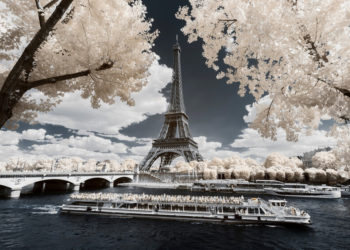
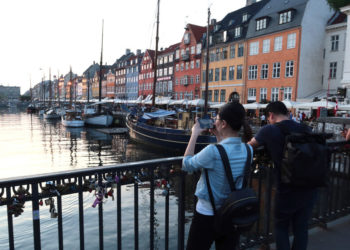
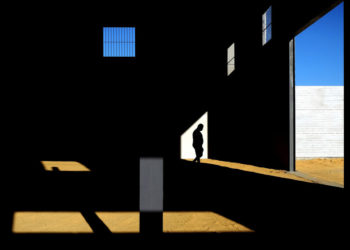
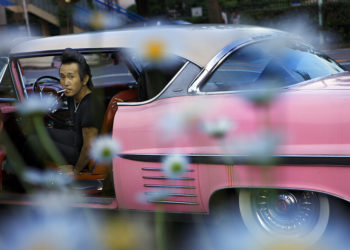


Discussion about this post